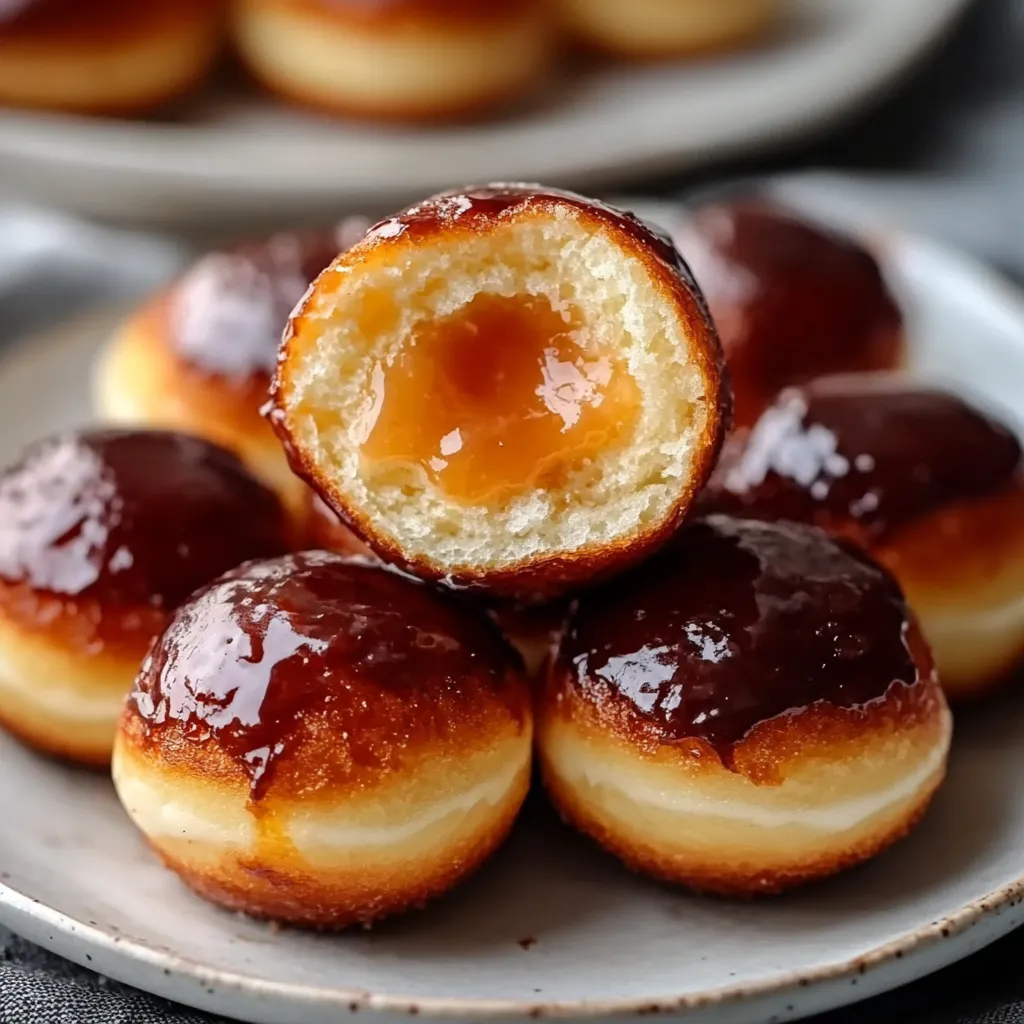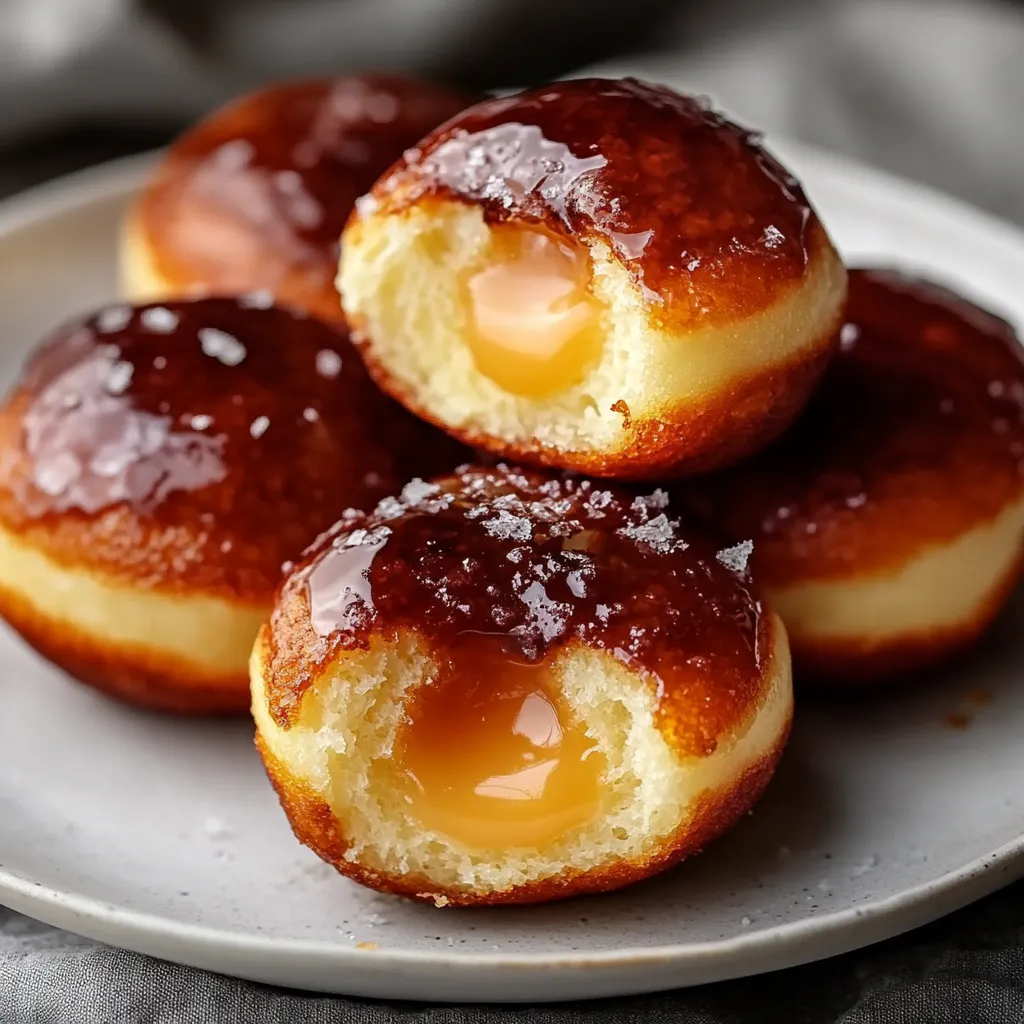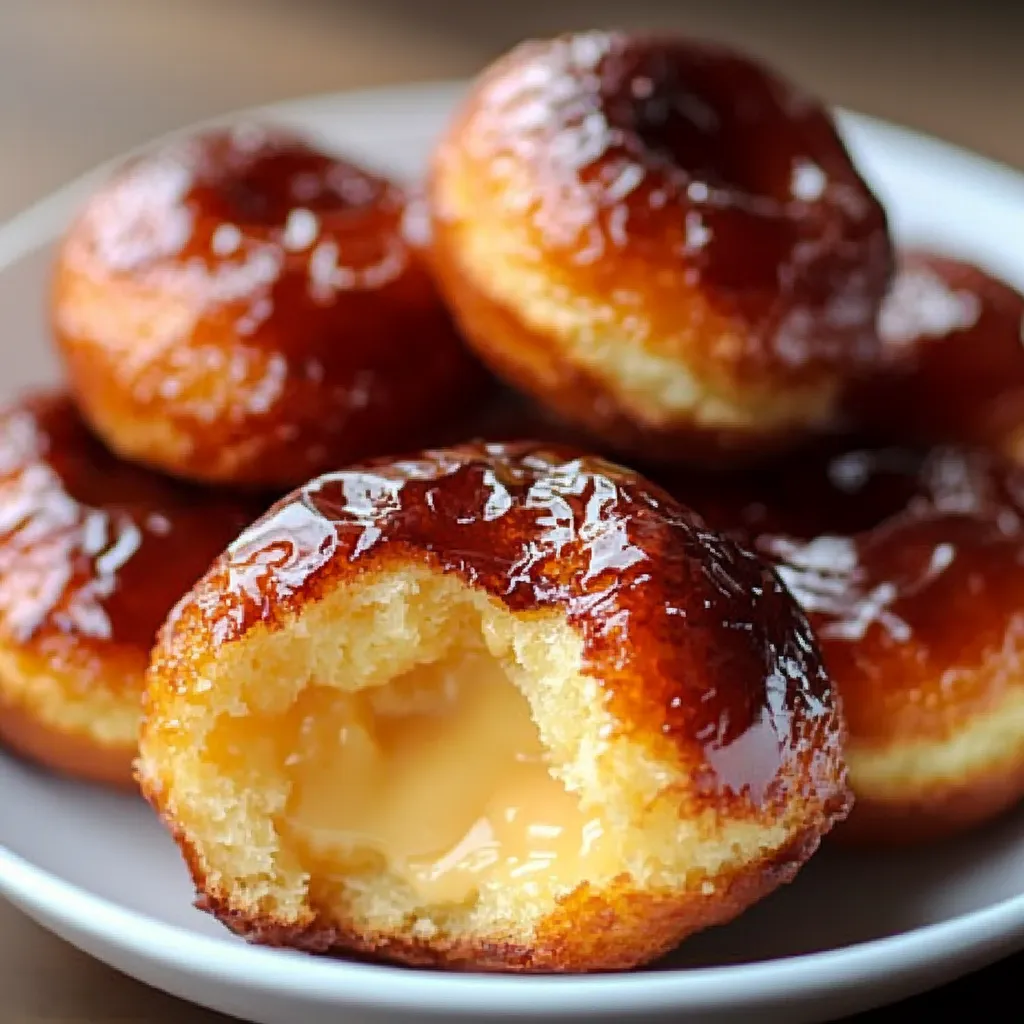 Pin it
Pin it
This crème brûlée donut recipe transforms ordinary donuts into a decadent dessert experience by combining the pillowy softness of freshly fried dough with smooth vanilla pastry cream and that signature crack of caramelized sugar on top. It's the perfect weekend project for when you want to impress friends or simply treat yourself to something extraordinary.
I first made these donuts for my sister's birthday brunch and they disappeared within minutes. The look on everyone's faces when they cracked through the caramelized sugar top was worth every minute spent in the kitchen.
Ingredients
- All purpose flour: Provides the perfect structure for these pillowy donuts, look for unbleached for best flavor
- Instant yeast: Ensures reliable rising every time
- Granulated sugar: Sweetens the dough perfectly
- Eggs: Add richness and help with the dough texture
- Unsalted butter: For that melt in your mouth quality, always use room temperature
- Warm milk: Activates the yeast and creates tender crumb
- Vanilla extract: Enhances the pastry cream, use real not imitation
- Egg yolks: Create that silky pastry cream
- Cornstarch: Thickens the pastry cream without making it gummy
- Extra sugar: For the caramelized topping, use fine granulated for best results
Step-by-Step Instructions
- Activate the yeast:
- Combine warm milk with instant yeast and a pinch of sugar. Let it rest for about 10 minutes until it becomes foamy and fragrant. This step ensures your dough will rise properly and develop good flavor.
- Mix the dough:
- In a stand mixer fitted with a dough hook, combine flour, sugar, and salt. Slowly add the activated yeast mixture while mixing on low speed. Gradually incorporate eggs one at a time, allowing each to fully integrate before adding the next. The dough will look shaggy at first but will come together.
- Add butter and flavorings:
- With the mixer running, add room temperature butter in small pieces, waiting until each piece is fully incorporated before adding more. This slow addition creates that pillowy texture we want. Add lemon zest and vanilla if using. Continue kneading for about 10 minutes until the dough is smooth, elastic, and pulls away from the sides of the bowl.
- First rise:
- Transfer the dough to a lightly greased bowl, cover with plastic wrap, and refrigerate overnight. This slow fermentation develops deeper flavors. Alternatively, let it rise at room temperature for 1-2 hours until doubled in size.
- Shape the donuts:
- Turn the dough onto a lightly floured surface and divide into equal portions. Shape into smooth balls by cupping your hands around each piece and rotating while applying gentle pressure. Place the shaped balls on a parchment lined tray with enough space between them.
- Second rise:
- Cover the shaped donuts with a clean kitchen towel and let rise again until visibly puffy and nearly doubled in size, about 30-45 minutes. They should look light and airy.
- Fry to perfection:
- Heat oil in a heavy bottomed pot to 350°F. Use a thermometer for accuracy as temperature is crucial. Carefully lower 2-3 donuts into the oil, cooking each side for about 2 minutes until golden brown. The donuts should puff up beautifully and float in the oil.
- Cool and prepare:
- Transfer fried donuts to paper towel lined plates to absorb excess oil. Allow to cool completely before filling.
- Make pastry cream:
- Heat milk until steaming but not boiling. Meanwhile, whisk egg yolks, sugar, and cornstarch in a bowl until pale yellow. Slowly stream hot milk into egg mixture while whisking constantly to prevent scrambling. Return mixture to saucepan and cook over medium heat, stirring continuously until thickened enough to coat the back of a spoon.
- Fill the donuts:
- Use a small knife to create a hole in the side of each donut. Fill a piping bag fitted with a medium round tip with cooled pastry cream. Insert tip into each donut and squeeze gently until cream just starts to come out of the hole.
- Create the brûlée topping:
- Sprinkle a thin, even layer of sugar over the top of each filled donut. Use a kitchen torch to carefully caramelize the sugar until it melts and turns amber. Watch carefully to prevent burning.
 Pin it
Pin it
The pastry cream is really the heart of this recipe. I once tried rushing it and ended up with scrambled eggs instead of smooth cream. Take your time tempering the eggs properly by adding the hot milk slowly while whisking constantly. Your patience will be rewarded with silky smooth results.
Make Ahead Options
These donuts are best made and enjoyed the same day, but you can prepare components in advance. The dough can be refrigerated for up to 24 hours during the first rise, which actually improves flavor. The pastry cream can be made up to 3 days ahead and stored in an airtight container with plastic wrap pressed directly on the surface to prevent skin formation. Just assemble and caramelize the sugar topping right before serving for the best texture contrast.
Troubleshooting Common Issues
If your dough seems too sticky, resist adding more flour immediately. Instead, use a bench scraper to handle it and give it more kneading time. The butter needs to fully incorporate before the dough develops proper structure. For frying, maintaining consistent oil temperature is crucial. If donuts are browning too quickly, your oil is too hot. If they're absorbing too much oil and staying pale, your oil is too cool. A simple candy thermometer solves this issue.
Flavor Variations
The basic recipe creates a classic vanilla crème brûlée donut, but you can customize easily. Add 2 tablespoons of cocoa powder to the pastry cream for a chocolate version. For coffee lovers, dissolve 1 tablespoon of espresso powder in the warm milk before making the pastry cream. My personal favorite variation includes a tablespoon of orange zest in the dough and a splash of Grand Marnier in the pastry cream for a sophisticated citrus twist that pairs beautifully with the caramelized sugar top.
 Pin it
Pin it
These donuts might require some effort, but the results will leave everyone amazed and asking for seconds.
Frequently Asked Questions
- → Can I make the dough ahead of time?
Yes, the dough actually benefits from slow fermentation. You can refrigerate it overnight after the first rise, which will develop more flavor. Just bring it back to room temperature before shaping and frying.
- → What's the best way to fill the donuts with pastry cream?
Use a piping bag fitted with a small round tip or a bismark tip. Create a small hole on the side of each donut, insert the tip about halfway through, and gently squeeze the pastry cream until the donut feels slightly heavier but not overfilled.
- → Can I make these without a kitchen torch?
Yes! You can use the wet caramel method instead. Heat sugar with a small amount of water in a saucepan until it turns amber, then carefully dip the tops of the filled donuts into the caramel. Be extremely cautious as caramel is very hot.
- → How long do these donuts stay fresh?
These donuts are best enjoyed the same day they're made. The caramelized sugar topping will begin to soften after several hours. If necessary, you can store unfilled donuts at room temperature for 1-2 days, then fill and caramelize just before serving.
- → Can I flavor the pastry cream differently?
Absolutely! You can add almond, coconut, or hazelnut extracts, a splash of rum or brandy, or even mix in some cocoa powder for chocolate variation. Just add these flavorings after the pastry cream has thickened.
- → What's the ideal temperature for frying the donuts?
175°C/350°F is the perfect temperature. Too hot and the outside will burn before the inside cooks; too cool and the donuts will absorb too much oil and become greasy. A cooking thermometer is highly recommended for best results.
